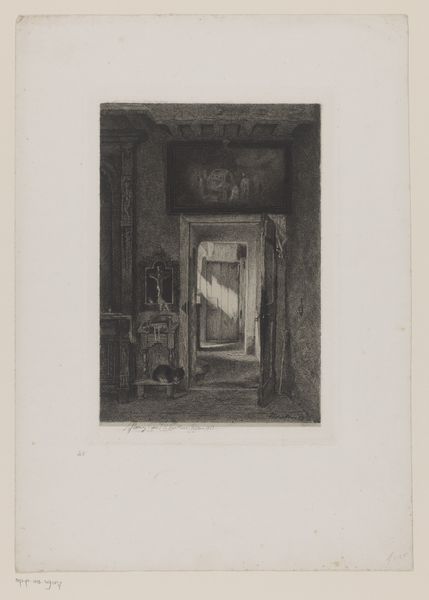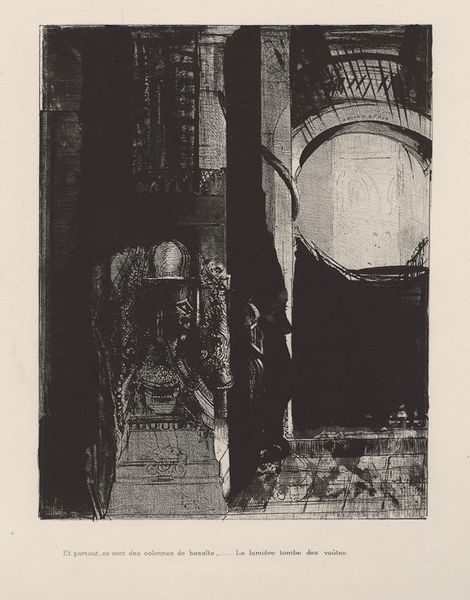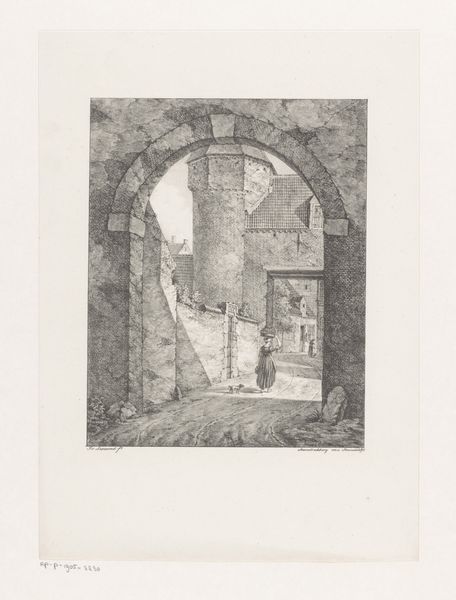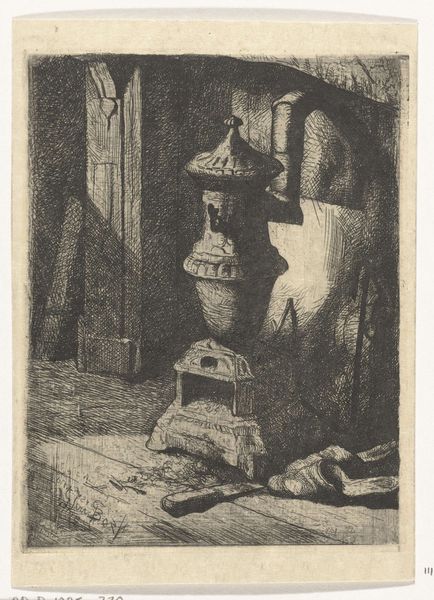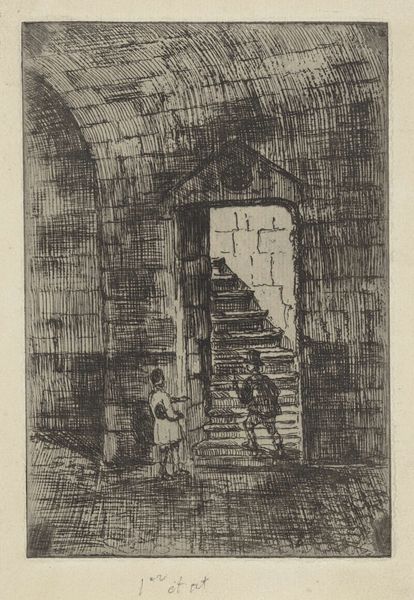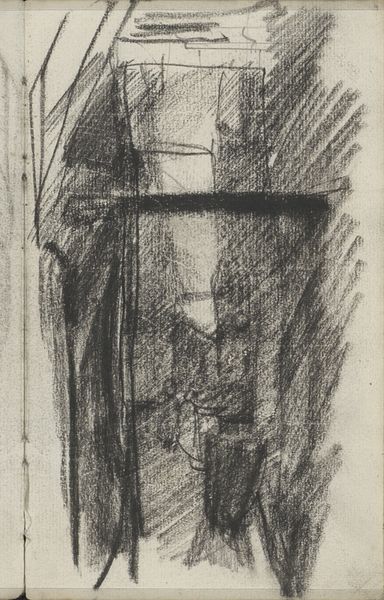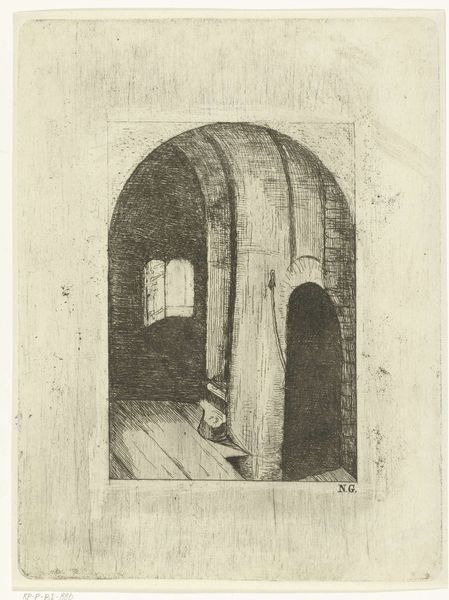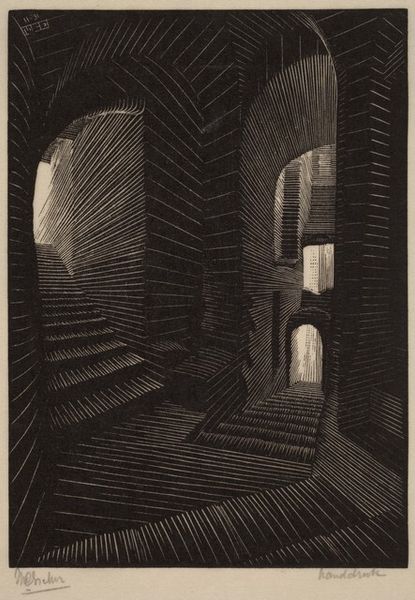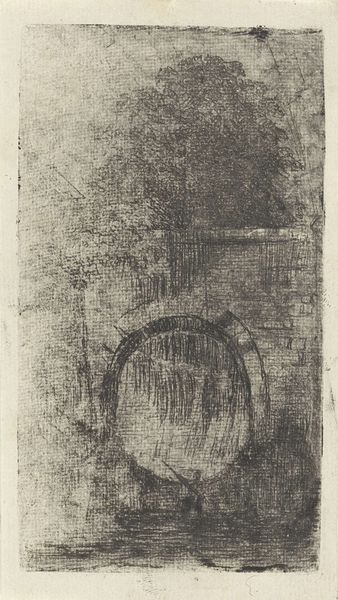
drawing, paper, ink
#
drawing
#
landscape
#
paper
#
ink
#
pencil drawing
#
genre-painting
#
realism
Dimensions: height 207 mm, width 145 mm
Copyright: Rijks Museum: Open Domain
Curator: Here we have "View Through an Open Door" by August Allebé, created sometime between 1860 and 1909. It's currently held here at the Rijksmuseum. The piece is crafted with ink on paper, a drawing that presents an intimate interior scene. Editor: The immediate impression is one of quiet domesticity, and maybe a bit of shadowed stillness. The door partially open creates a sense of anticipation or an invitation into a private space. The scale feels human, accessible. Curator: The composition is really structured around this interplay of light and shadow. Allebé's use of hatching and cross-hatching in the ink work is quite masterful, building volume and texture within a limited tonal range. Note how the door acts as a framing device, directing our gaze into the darker interior beyond. Editor: I agree, but also, consider what kind of domesticity is being presented. The dark interior beyond the door, contrasted against the rough texture of the surrounding wood, can read as confinement and speaks to the labor behind maintaining such a space. Who occupies this room? What labor do they perform within? Curator: That’s an interesting reading. The realism present points more toward the simple dignity of everyday life. Allebé focuses our attention to the construction, to the form, to the play of illumination across surfaces. The formal qualities suggest an interest in the mundane transformed through artful representation. Editor: Yet, these supposedly ‘mundane’ realities are so often unequally distributed. Allebé captures more than surface; the historical context insists we read the silences. Whose story remains untold by focusing purely on the form, and who benefits? The realist style risks normalizing precisely these social imbalances by paying such careful attention to structural components of the setting. Curator: Fair enough. But to appreciate how the artist balances this sense of depth while using minimalist ink strokes remains powerful. Regardless of whether we center the conversation around a narrative reading of the occupants of that inner space or around form and shadow play, the interplay here invites each of us to reach an original individual finding. Editor: Indeed, it encourages a dialogue of how form impacts social dynamics in interior spaces. A powerful sketch, one could agree.
Comments
No comments
Be the first to comment and join the conversation on the ultimate creative platform.
